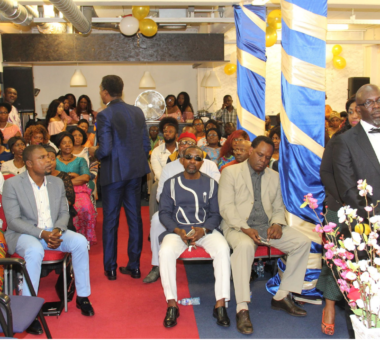what did the good friday agreement do
Brexit and Northern Ireland: What does each side want? [25], The Assembly and Executive were eventually established in December 1999 on the understanding that decommissioning would begin immediately, but were suspended within two months due to lack of progress, before being re-established in May 2000 as Provisional IRA decommissioning eventually began. The IRA in particular targeted the police and soldiers from the British army who patrolled the streets. 4 min read. VideoRecord numbers of guide dog volunteers after BBC story. From the early days of Christianity, Good Friday was observed as a day of sorrow, penance, and fasting, a characteristic that finds expression in the German word Karfreitag ("Sorrowful Friday"). An active civil rights movement emerged in the late 1960s, and incidents of communal violence ensued, which led the British government to send troops to assist in quelling the urban violence. The Good Friday Agreement, also known as the Belfast Agreement, was a political deal designed to bring an end to 30 years of violent conflict in Northern Ireland, known as the Troubles. An agreement that can't even agree on its own name - the irony. Yet, despite the widespread euphoria that greeted the deal, this was only a beginning. It was signed on April 10, 1998 - which fell that year on Good Friday in the Christian Easter holiday. The Northern Ireland referendum was to approve the agreement reached in the multi-party talks. The agreement reached was that Northern Ireland was part of the United Kingdom, and would remain so until a majority of the people both of Northern Ireland and of the Republic of Ireland wished otherwise. [10] The Irish Constitution was also amended to implicitly recognise Northern Ireland as part of the United Kingdom's sovereign territory,[8] conditional upon the consent for a united Ireland from majorities of the people in both jurisdictions on the island. (Reuters) - The Good Friday Agreement largely ended the "Troubles", three decades of violence that had racked Northern Ireland since the late 1960s. Part of it would see the early release of paramilitary prisoners who had been in Northern Ireland jails. The Northern Ireland political parties who endorsed the agreement were also asked to consider the establishment of an independent consultative forum representative of civil society with members with expertise in social, cultural, economic and other issues and appointed by the two administrations. The Good Friday Agreement at 20: Achievements and Unfinished Business. Two were broadly labelled nationalist: the Social Democratic and Labour Party, and Sinn Fin, the republican party associated with the Provisional Irish Republican Army. The BBC is not responsible for the content of external sites. For Northern Ireland the decades that followed were marked by tensions and controversies, sometimes spilling over into violence, between unionists who favoured remaining with Britain and nationalists who favoured unification with the Irish Free State (later the Republic of Ireland). Legal commentator David Allen Green described it as "a core constitutional text of the UK, and of Ireland of more everyday importance than hallowed instruments such as, say, Magna Carta of 1215 or the 1689 Bill of Rights". 27 February 2023. The Good Friday Agreement is based on the idea of co-operation between communities. In an interview with Susan Hackley, former Managing Director of the Program on Negotiation at Harvard Law School, back in the February 2004 Negotiation newsletter, we learn how he was able to facilitate an agreement between these long-warring parties. On 10 April 1998, something called the Good Friday Agreement (or Belfast Agreement) was signed. Good Friday, the Friday before Easter, the day on which Christians annually observe the commemoration of the Crucifixion of Jesus Christ. Our editors will review what youve submitted and determine whether to revise the article. Under the agreement, it was proposed that the already-existing BritishIrish Interparliamentary Body would be built upon. Both Governments will put in place mechanisms to provide for an accelerated programme for the release of prisoners, including transferred prisoners, convicted of scheduled offences in Northern Ireland or, in the case of those sentenced outside Northern Ireland, similar offences (referred to hereafter as qualifying prisoners). Read about our approach to external linking. In the third Northern Ireland Executive, the same political relationship existed between Robinson and McGuinness as existed formerly between Paisley and McGuinness. It was signed on April 10, 1998 - which fell that year on . . The April 1998 signing of the Good Friday Agreement/Belfast Agreement [1] enabled a comprehensive approach to governance and security. Strand 1 dealt with the democratic institutions of Northern Ireland and established two major institutions: The Northern Ireland Assembly is a devolved legislature for Northern Ireland with mandatory cross-community voting on certain major decisions. Encyclopaedia Britannica's editors oversee subject areas in which they have extensive knowledge, whether from years of experience gained by working on that content or via study for an advanced degree. During the 1960s, the tension between the two sides turned violent, resulting in a period known as the Troubles. The agreement sets out a framework for the creation and number of institutions across three "strands". (Reuters) - The Good Friday Agreement largely ended the "Troubles", three decades of violence that had racked Northern Ireland since the late 1960s. However, the wide disparity between Catholic and Protestant support in Northern Ireland (96 percent of Catholics voted in favour of the agreement, but only 52 percent of Protestants did) indicated that efforts to resolve the sectarian conflict would be difficult. Although the politicians continue to disagree, there has been no return to the violence once seen in Northern Ireland. Sir Tony spoke of the frantic attempts to get a deal in the run up to Good Friday in 1998. It took constitutional debates off the table by declaring . [47][48] Most parties in Northern Ireland expressed concern at the Bill, though some within the Democratic Unionist Party welcomed it. During the negotiations on Britain's planned 2019 withdrawal from the European Union, the EU produced a position paper on its concerns regarding the Good Friday Agreement. Austen Morgan, The Hand of History? "I know it was a peace agreement," said another. A civil rights protest by Northern Irish activists in 1969 (Photo: Getty) The Good Friday Agreement is built on the European Convention of Human Rights - it assumes its "complete incorporation . Since the signing of the Good Friday Agreement peace deal in 1998, militant Ulster loyalists have been responsible for slightly more security-related deaths than republicans. It was signed on April 10, 1998 - which fell that year on Good Friday in the Christian Easter holiday. The institutions of the Good Friday Agreement were created in this image. During the Troubles, people crossing the border were subject to British Army security checks - and surveillance watchtowers were placed on hilltops. The Northern Ireland Human Rights Commission delivered advice to the Secretary of State for Northern Ireland on 10 December 2008. The result of these referendums was a large majority in both parts of Ireland in favour of the agreement. But this didn't completely bring an end to Northern Ireland's problems. ", That was among the responses offered cautiously when BBC News NI asked young people - some as young as 18 - 'What is the Good Friday Agreement?'. A simultaneous referendum held in the Republic of Ireland produced an even larger majority (94.4%) in favour. The conflict in Northern Ireland dates back to when it became separated from the rest of Ireland in the early 1920s. Among other factors, U.S. President Bill Clinton and Senator George Mitchell played a prominent role to forge the compromise. They write new content and verify and edit content received from contributors. In May 1998, adults in Northern Ireland and the Republic of Ireland voted in favour of the Good Friday Agreement, which made it official - and the Northern Ireland Assembly took their seats in December of that year. Strand 2 dealt with "north-south" issues and institutions to be created between Northern Ireland and the Republic of Ireland. Video, Record numbers of guide dog volunteers after BBC story. Of those who voted, almost all of the Catholics voted for the agreement, compared with 57% of the Protestants. In the Republic of Ireland, voters were asked whether they would allow the state to sign the agreement and allow necessary constitutional changes (Nineteenth Amendment of the Constitution of Ireland) to facilitate it. BBC news NI asks The Good Friday Agreement - do you know what it is? The Good Friday Agreement (also known as the Belfast Agreement) is 2 0 years old today, but recent events in Northern Ireland have shown that power-sharing has proven a difficult exercise. The Good Friday Agreement, also known as the Belfast Agreement, was a political deal designed to bring an end to 30 years of violent conflict in Northern Ireland, known as the Troubles. If this were to be reinstated, it could hold hearings on sensitive issues such as identity and symbols, as well as address the commitment in the Agreement to . The Unionist community held their own protests in response. Northern Ireland's present devolved system of government is based on the agreement. Most notably these included paramilitary decommissioning, police reform and the normalisation of Northern Ireland. Against the background of political violence during the Troubles, the agreement committed the participants to "exclusively democratic and peaceful means of resolving differences on political issues". The idea of the agreement was to get the two sides to work together in a group called the Northern Ireland Assembly. Antrim and Down are, and will remain, as much a part of Ireland as any southern county. Northern Ireland (in purple) is part of the UK - with England, Wales and Scotland - while the Republic of Ireland is a separate country, , who were happy to remain part of the UK - some of them were also called, (as they were loyal to the British crown), , who wanted Northern Ireland to be independent from the UK and join the Republic of Ireland - some of them were also called, (as they wanted Northern Ireland to join the Republic of Ireland), This photo shows police fighting with rioters in 1969, in the area of Londonderry, This picture shows the damage to a hotel in Brighton in 1984, after the IRA set off a bomb to try to kill the UK's prime minister at the time, Margaret Thatcher, This picture shows the Good Friday Agreement being signed by two politicians - the British Prime Minister Tony Blair (on the left) and the Irish Prime Minister Bertie Ahern, The British Prime Minister Tony Blair and an American politician George Mitchell - who led the talks - shaking hands after the signing of the Good Friday Agreement, The front cover of the Good Friday Agreement, signed by the participants, Even though they belonged to different political parties, Northern Ireland's First Minister Arlene Foster (on the left) and Deputy First Minister Martin McGuinness - who passed away in March 2017 - worked together as leaders of Northern Ireland, before the arrangement where they shared power collapsed in January 2017, deal between the main parties in Northern Ireland collapsed.
British Grand Prix 2022 Timetable,
Peter Callahan Net Worth,
Articles W


